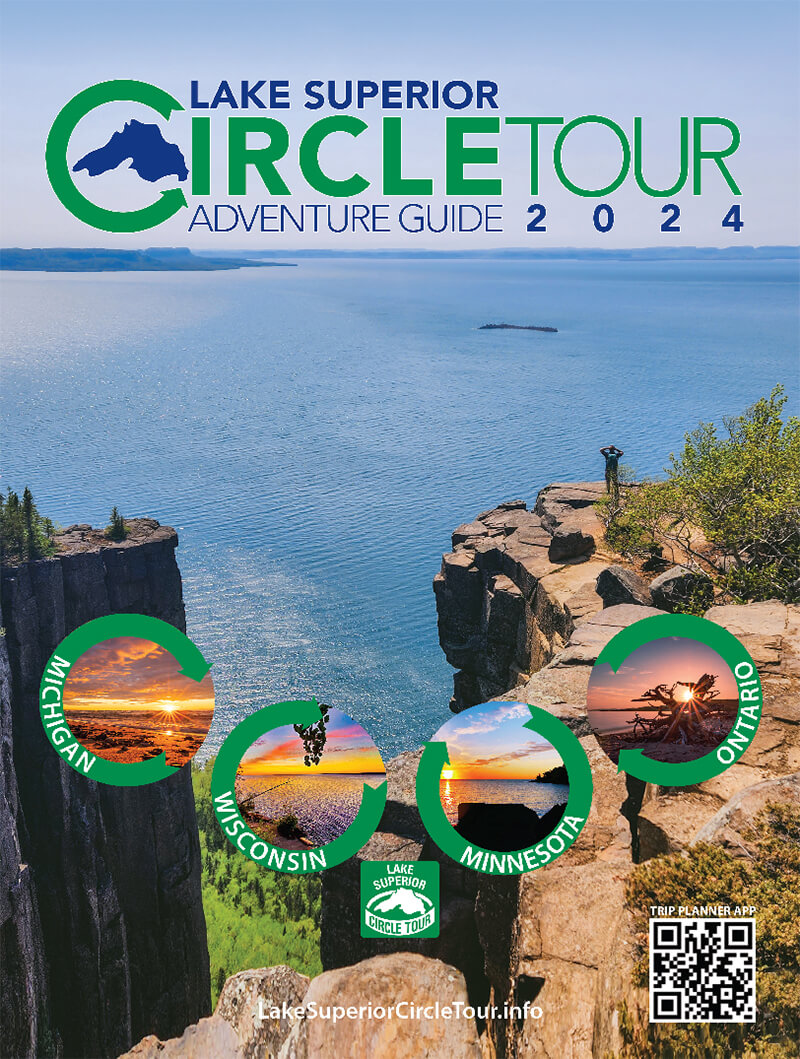One of the greatest treats of living in or visiting Lake Superior, is a chance to see the Aurora Borealis, more commonly known as the Northern Lights. I am sure you would agree with me, if you have ever seen them, it’s impossible to forget your first time. Dancing ribbons and spikes of glowing energy in the sky, they are the last glimpse of Disney-level wonder, as we grow up and realize that all the fantastic magic of our young imaginations was going to require a Netflix subscription to see now.
But the Northern Lights are very much a part of living and visiting the North. They are far more rewarding than anything that can be seen on Netflix, and you don’t have to be “lucky” to catch them. I’m sorry if this article takes away a little of the magic, but I don’t think that any level of understanding will ever take away the childlike awe that strikes anyone who sees them, whether it’s your first time or your 100th.

So… I’m guessing that most readers of this article who have seen Northern Lights have either been lucky enough to look up while out in the northern wilderness, gotten a call from a friend to “go look outside”, or saw a faintly washed out view of them amongst the streetlights surrounding their backyard. In all cases, imagine if you could have known they were coming a few days in advance. Time enough to be in the perfect spot to enjoy them for the evening, time enough to have gotten the kids or that special someone in your life ready for the show, time to have gotten ready to be out camping in the northern wilds. Keep reading, I’ve got your back.
What are the Northern Lights?
Well, here’s the spoiler… they are not magic… they just look like it. I’m definitely not a scientist, but here’s a photographer’s explanation (for whatever that’s worth). Northern Lights, even though they are best seen at night, come from the sun. The sun is constantly bombarding the earth with “Solar Winds” of electrified particles. Every little while, the sun “burps” a huge amount of these electrified particles towards the earth (called a Coronal Mass Ejection or CME). The Northern Lights we see are the interaction of the gasses in our atmosphere and these electrified particles from the sun.
These electrified sun burps (CMEs) take about 2 to 3 days to reach Earth… and scientists know they are coming almost instantly.
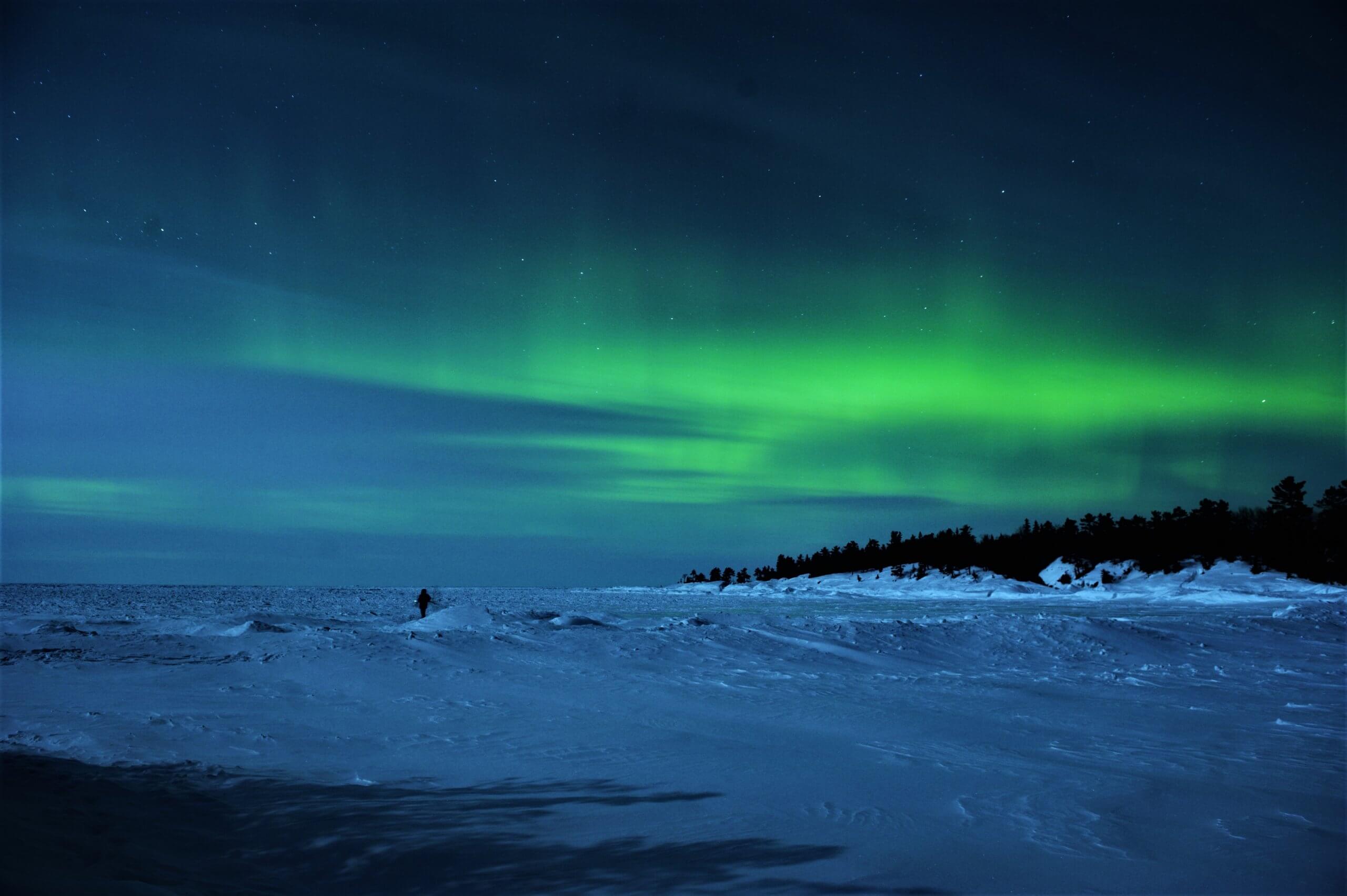
How can I tell when they are coming?
Just like checking your favourite weather forecast about a coming snow storm, there are online forecasts for solar wind storms. Space weather!!!!
Option 1: Space Weather Canada
The easiest site to read comes from none other than the Canadian Government! With a simple set of colour coded bar graphs and a map to help you locate yourself (Superior Country sits mostly in the “Sub-auroral zone”), you can increase your chances of catching a great show!
If you play with the arrows above the map on the right, you can see the 6 hour, 24 hour, and 48 hour forecast. As a tip, just like any weather forecast, there is no guarantee that this is entirely active.

Option 2: Spaceweather.com
Another great option (especially for those of you who get really passionate about things that interest them – nerds like me) is spaceweather.com.
This site is fantastic and will not only provide you with the graphs and maps needed to understand when the Aurora are coming, but also does a great job of explaining what is happening and why. This site will also give you a lot of the raw data used by scientists to form the simplified 6-48 hour forecast charts, helping you understand days to weeks in advance that there might be a chance of predicting an Aurora sighting.
As a crash course, here are the relevant parts of the site that will help you be ready. When you open the site, you will immediately see headlines about upcoming spaceweather events, such as Coronal Mass Ejections (CMEs). These are a great early warning and a chance to understand why, how significant, and how long they may last (some solar storm events can last days).
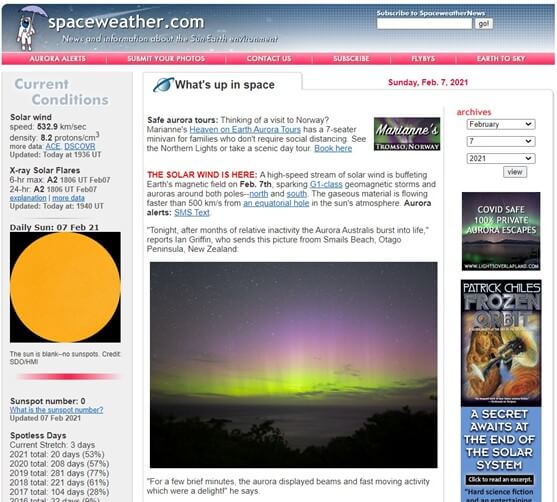
Now, scroll down and look for this map on the left hand side of the page. Two things are relevant – first, the map itself, which will show where the Northern Lights (aka Aurora) are visible and how strong they are. In the first map shown here, as you can see, not very strong – you would need to go way up north to see them.
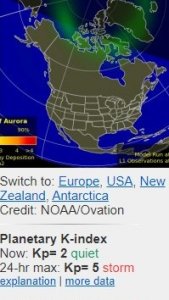
Now this second map is a different story. If ever you see the map looking like this, run outside! The show has started and would be visible all the way into the northern United States.

The second important part is the “Planetary K-Index” (found just below the map). This will give a forecast of the next 24 hours, and is quite accurate. The K-index will vary between 1-9. 1-4 is pretty quiet with lower likelihood of seeing Northern Lights. The “Storm” designation starts at 5 and goes up. As a tip… anything showing a 5 or higher, is worth planning on being outside.
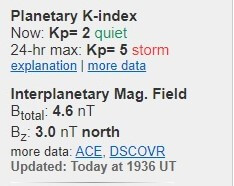
Lastly, the site does a great job of giving you the likelihood (in percentage) and intensity (active, minor, and severe) of forecast storms (found lower on the webpage to the left).

You can tell the future, now what?
Now that you understand how to predict a storm, what else can you do to make the show even more enjoyable?
Whether you are setting up a camera to try and photograph them, or just out to enjoy the show with your family, planning is everything. First off, it’s time to figure out where along the Lake Superior Circle Tour you can find a great spot with a wide open view north. The second thing to think about, is light pollution. Surrounding light from streetlights or even a full moon can brighten the sky and fade out the Northern Lights, washing them out or even making them impossible to see. For tips on how to photograph the Northern Lights, check out the blog Shooting Aurora.

Thankfully, the shoreline of Lake Superior and surrounding areas offer countless places with beautiful views, perfect for enjoying this phenomenon. Plan ahead, and you’ll take a lot of the luck out of spotting this incredible show. Enjoy.






